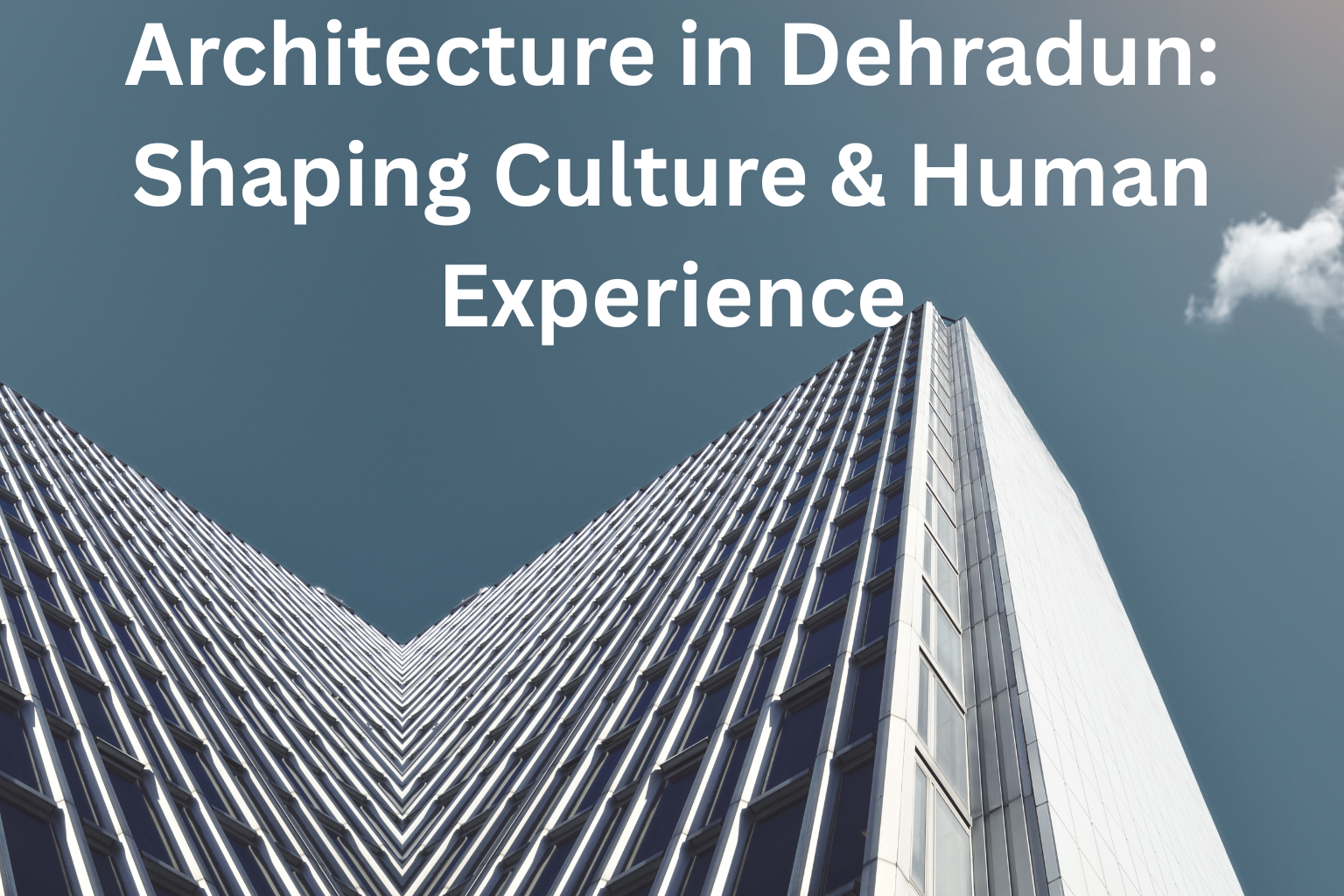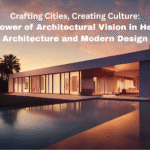The Role of Architecture in Shaping Cultural Identity and Human Experience: Heritage Architecture in Dehradun and Beyond
Introduction: Architecture as a Cultural Lens
Architecture in dehradun is more than design; it is the cultural lens through which societies express themselves. From majestic forts and palaces to contemporary skyscrapers and smart cities, every structure is a mirror of human identity and collective vision. It influences how people live, interact, and experience their surroundings.
When we explore the role of architecture in shaping cultural identity and human experience, one theme stands out strongly: the relationship between heritage and modernity. Even in places like Dehradun, where heritage architecture is not as ancient or monumental as Jaipur or Varanasi, the city still preserves its cultural spirit through colonial-era structures, religious monuments, and educational institutes. These buildings shape the cultural identity of Dehradun and enrich the human experience of its citizens.
Heritage Architecture: A Foundation of Cultural Identity
Heritage architecture is a timeless reflection of traditions, craftsmanship, and collective values. Ancient temples, palaces, and monuments tell stories of dynasties, communities, and civilizations. They embody art, science, and spirituality, creating not just buildings but cultural landmarks.
Globally, heritage architecture such as the Colosseum in Rome, Machu Picchu in Peru, or the Taj Mahal in India continues to define cultural identity and influence tourism, economy, and pride.
Heritage Architecture in Dehradun: Preserving Colonial and Cultural Legacy
When we think of heritage architecture in Dehradun, it primarily refers to the British colonial-era structures and religious institutions that shaped the city’s cultural identity.
- Forest Research Institute (FRI)
- Built in 1906, FRI is one of Dehradun’s most iconic landmarks.
- Its Greco-Roman architecture, massive columns, and colonial charm make it an architectural treasure.
- Today, it is not just an educational institution but also a symbol of Dehradun’s identity, frequently used in films and cultural events.
- Clock Tower (Ghanta Ghar)
- A landmark in the heart of the city, built during the British period.
- It connects the cultural memory of older generations with the modern cityscape.
- Indian Military Academy (IMA)
- Established in 1932, its colonial architecture represents discipline, heritage, and the cultural ethos of India’s defense history.
- Religious & Cultural Sites
- Mindrolling Monastery – Though modern (built in 1965), it reflects traditional Tibetan Buddhist architecture, enriching Dehradun’s cultural identity.
- St. John’s Church (1844) and St. Thomas’ Church carry British-era design and spiritual significance.
Architecture as a Shaper of Human Experience
Architecture affects the way people feel, behave, and interact with spaces.
- Spiritual experience: Standing in front of the Mindrolling Monastery or walking into St. John’s Church creates an atmosphere of peace and devotion.
- Cultural pride: The grandeur of the FRI instills pride among locals and inspires curiosity among visitors.
- Sense of belonging: Landmarks like the Clock Tower connect generations, offering a shared cultural memory.
Thus, in Dehradun as elsewhere, heritage architecture defines how people experience their culture daily.
Sustainability and Lessons from Heritage
Interestingly, heritage architecture in Dehradun and elsewhere teaches us lessons in sustainability.
- Churches and colonial buildings used local materials and climate-friendly design (thick walls, ventilation).
- Stepwells and havelis across India showcased water conservation and natural cooling.
Today, sustainable architecture revives these lessons with solar panels, rainwater harvesting, and eco-friendly materials.
Thus, heritage and modernity together ensure architecture supports both cultural identity and human survival.
Architects as Visionaries of Culture
Architects are storytellers. Through their vision, they shape identity and experience.
- Le Corbusier → Chandigarh (modern Indian city design).
- Charles Correa → blended Indian traditions with contemporary needs.
- Colonial architects in Dehradun → left behind a heritage that continues to influence the city’s identity today.
In Dehradun, every landmark—FRI, IMA, or Clock Tower—reflects the vision of past architects, proving their role in crafting cultural identity.
Conclusion: Architecture as the Identity of Dehradun and Beyond
“The Role of Architecture in Shaping Cultural Identity and Human Experience: Heritage Architecture in Dehradun and Beyond” reveals that architecture is more than design—it is the heartbeat of culture.
- Heritage architecture in Dehradun, though colonial in nature, has given the city its identity and continues to enrich human experience.
- Globally, architecture connects past traditions with modern aspirations.
- From temples to towers, from forts to eco-friendly buildings, architecture remains the bridge between culture and experience.





Leave a Reply